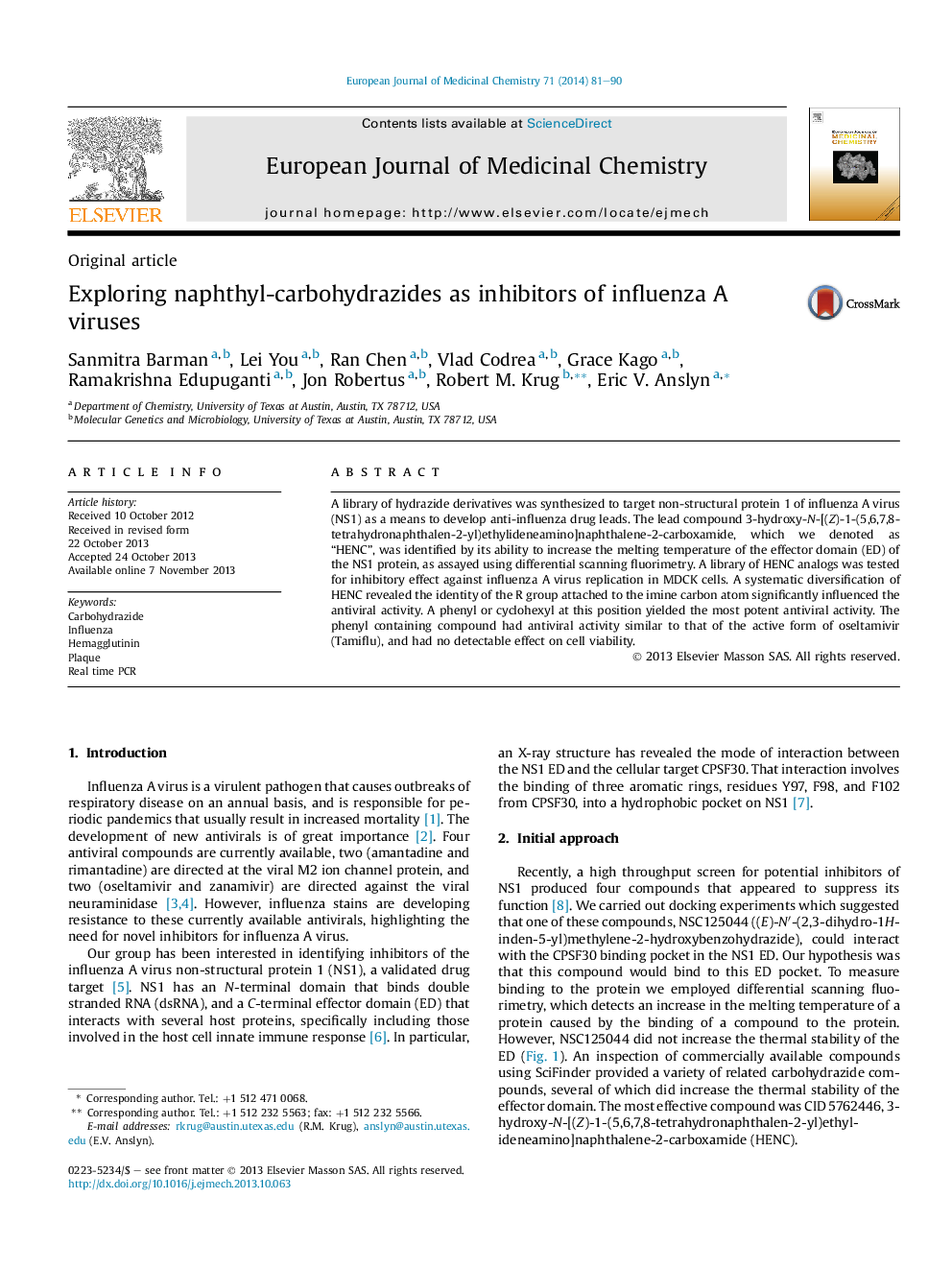| Article ID | Journal | Published Year | Pages | File Type |
|---|---|---|---|---|
| 1392583 | European Journal of Medicinal Chemistry | 2014 | 10 Pages |
•Inhibitors for influenza A viruses were designed and synthesized.•The molecule “HENC” shows the active structure of the inhibitor.•The identity of the “R” group attached to the imine bond plays an important role.•The molecule “18” shows comparable inhibitory activity as Tamiflu.
A library of hydrazide derivatives was synthesized to target non-structural protein 1 of influenza A virus (NS1) as a means to develop anti-influenza drug leads. The lead compound 3-hydroxy-N-[(Z)-1-(5,6,7,8-tetrahydronaphthalen-2-yl)ethylideneamino]naphthalene-2-carboxamide, which we denoted as “HENC”, was identified by its ability to increase the melting temperature of the effector domain (ED) of the NS1 protein, as assayed using differential scanning fluorimetry. A library of HENC analogs was tested for inhibitory effect against influenza A virus replication in MDCK cells. A systematic diversification of HENC revealed the identity of the R group attached to the imine carbon atom significantly influenced the antiviral activity. A phenyl or cyclohexyl at this position yielded the most potent antiviral activity. The phenyl containing compound had antiviral activity similar to that of the active form of oseltamivir (Tamiflu), and had no detectable effect on cell viability.
Graphical abstractFigure optionsDownload full-size imageDownload as PowerPoint slide
